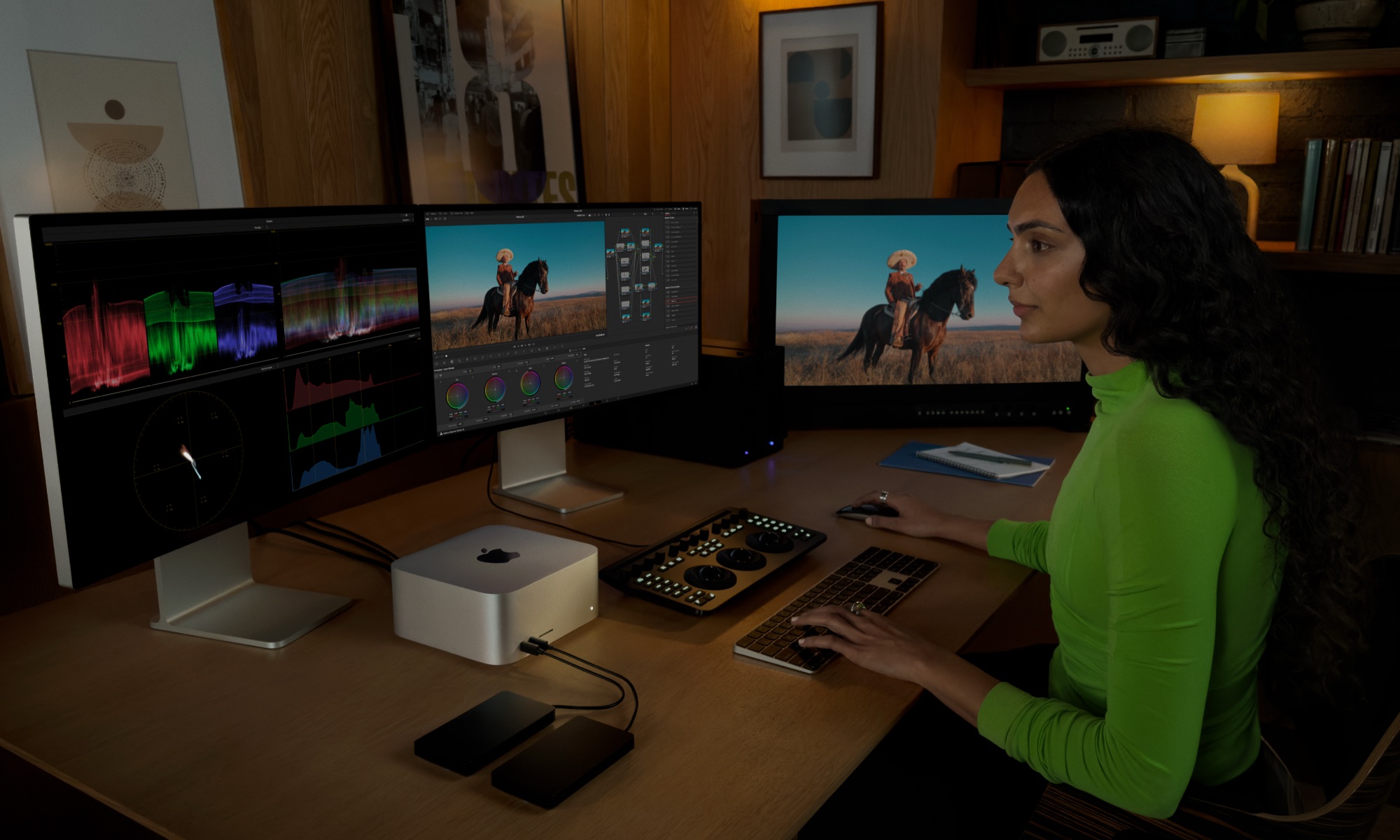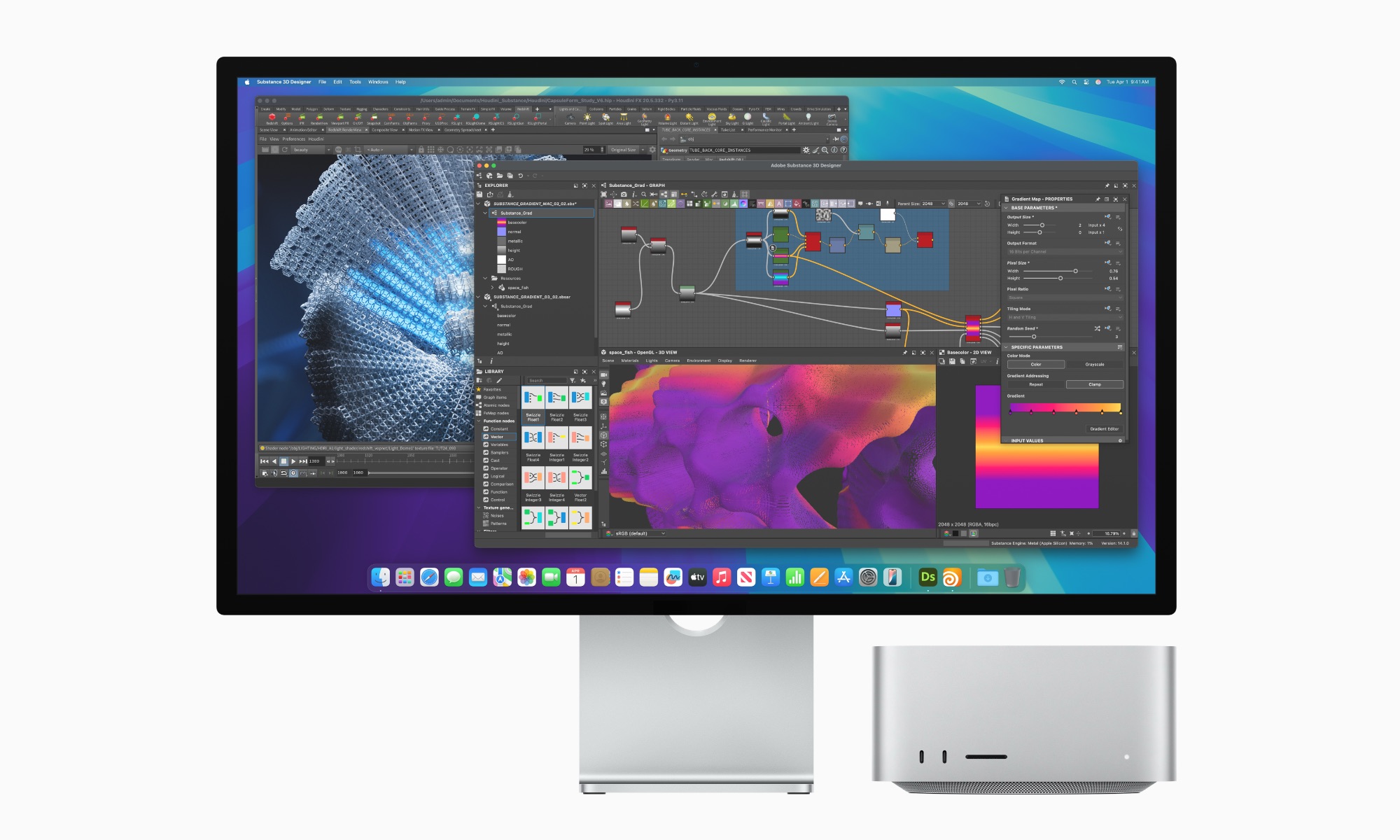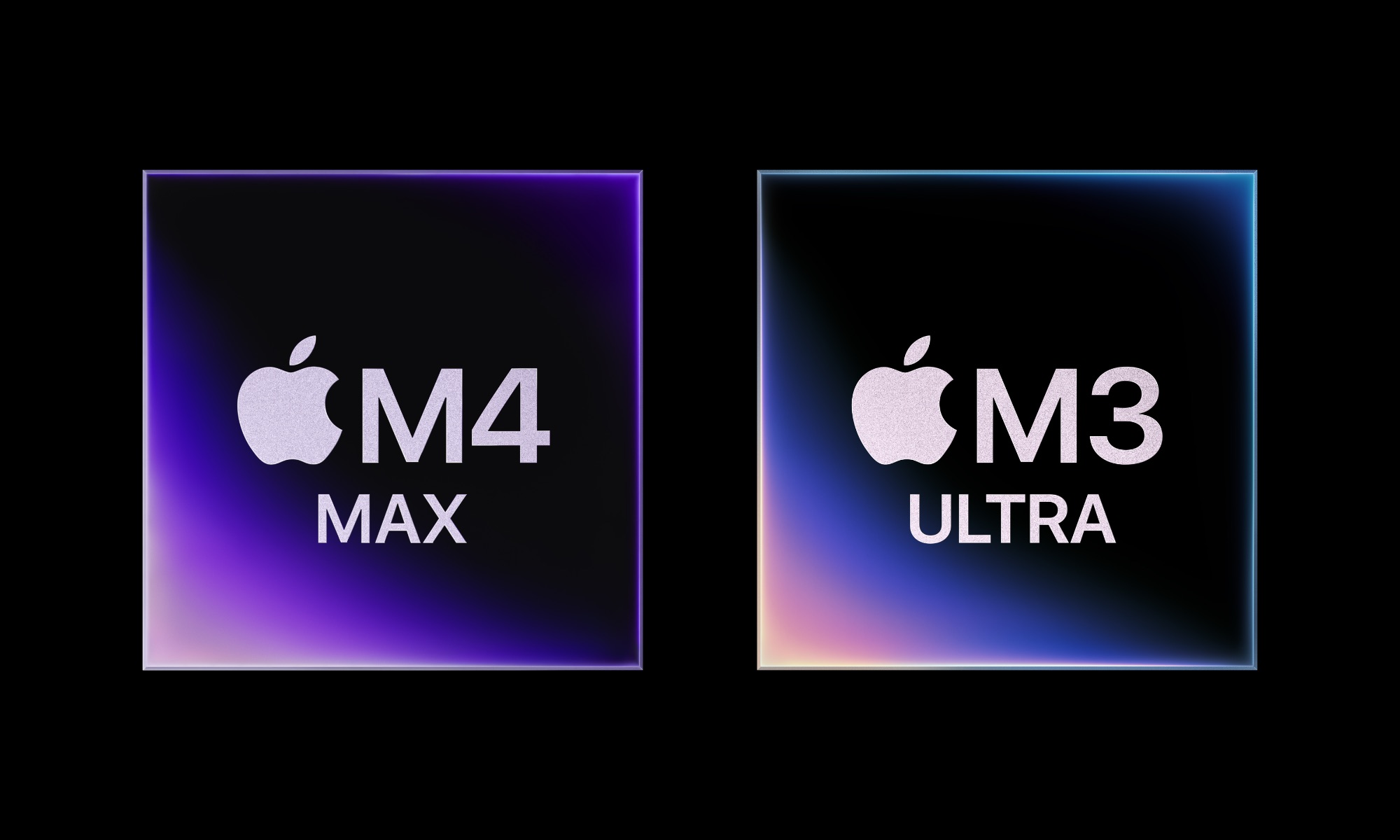Surprise: Apple Reveals Mac Studio with M3 Ultra Chip

Toggle Dark Mode
So far this year, Apple has defied nearly all the conventional wisdom regarding its product release cycles. First, we saw an unusual February release of the spiritual successor to the iPhone SE, which arrived as the iPhone 16e instead, becoming part of the iPhone 16 family and kicking off a potential annual cycle for Apple’s entry-level iPhone.
Then, while everyone was expecting the new M4 MacBook Air, Apple dropped a bombshell by releasing an M3 iPad Air instead, plus a new entry-level iPad that’s now the first new product released since late 2023 that doesn’t support Apple Intelligence.
Now it’s tossing another one into the mix: a new Mac Studio that not only arrives earlier than expected, but packs in — wait for it — an M3 Ultra chip.
Yes, you read that right. That’s a chip from a family that hasn’t been used in a new Mac since this time last year, when Apple unveiled the M3 MacBook Air lineup. Now that Apple’s most affordable MacBooks are moving to the M4 generation, the company has decided to release its souped-up version of the M3 Max and put it in this year’s Mac Studio.
It’s an odd move considering that the M3 Ultra was a chip that many reliable sources predicted Apple would skip entirely, and even more unusual for its timing. The M1 Ultra debuted almost precisely three years ago, on March 8, 2022, when Apple unveiled the original Mac Studio. That was followed by an M2 Ultra Mac Studio at Apple’s 2023 Worldwide Developers Conference (WWDC), announced alongside the first Apple Silicon Mac Pro that featured the same M2 Ultra chip.
Last year came and went with no new Mac Studio or Mac Pro, which was arguably fine as Apple’s high-end professional Macs were already powerful enough. Still, some believed Apple’s choice to give those two a pass was based on its problems reliably fabricating M3 chips using TSMC’s leading-edge N3B process, which was known to have serious yield problems. Apple forged ahead with M3 MacBook Pro, iMac, and MacBook Air lineups, but skipped the Mac mini, Mac Studio, and Mac Pro. There were M3 Pro and M3 Max chips, but those were used exclusively in the MacBook Pro.
However, it looks like an M3 Ultra was in the cards—it just took a bit longer than anyone expected. Apple announced the new chip today in a separate press release, touting its benefits over the M1 Ultra and M2 Ultra. Apple is also following its usual playbook here: the M3 Ultra is essentially two M3 Max chips fused together.
M3 Ultra is the pinnacle of our scalable system-on-a-chip architecture, aimed specifically at users who run the most heavily threaded and bandwidth-intensive applications. Thanks to its 32-core CPU, massive GPU, support for the most unified memory ever in a personal computer, Thunderbolt 5 connectivity, and industry-leading power efficiency, there’s no other chip like M3 Ultra.
Johny Srouji, Apple’s senior vice president of Hardware Technologies
That translates to a 32-core CPU with 24 performance cores, plus an 80-core GPU — double that of the M3 Max. It’s also configurable with up to 512 GB of unified RAM, and supports Thunderbolt 5 across the board. There’s also a scaled-down version that features “only” a 28-core CPU and 60-core GPU, but all M3 Ultra chips have a 32-core Neural Engine.
Notably, the highest-end M3 Ultra chip adds an extra $1,500 to the price tag of the Mac Studio, which now starts at $1,999 for the base M3 Ultra model with 96 GB of unified memory and a 1 TB SSD. Pushing the RAM up to 512 GB will add another staggering $4,000, and that requires the more powerful M3 Ultra. Throw in the largest 16 TB SSD, and that brings a tricked-out Mac Studio to $14,099 (although you can finance that for a mere $1,174.91 per month over 12 months).
The new Mac Studio is the most powerful Mac we’ve ever made. A complete game-changer for pros around the world — powering both home and pro studios — Mac Studio sits in a class of its own, offering a staggering amount of performance in a compact, quiet design that fits beautifully on your desk. With this new Mac Studio, we’re delivering even more extreme performance with M4 Max and M3 Ultra, support for half a terabyte of unified memory, up to 16TB of superfast storage, and Thunderbolt 5 connectivity. Mac Studio truly is the ultimate pro desktop.
John Ternus, Apple’s senior vice president of Hardware Engineering
Thankfully, Apple is offering a more affordable version. However, in another unusual twist, the base model Mac Studio gets an M4 Max chip, marking the first time Apple has sold a new Mac with two different generations of Apple Silicon.
Meanwhile, the M4 Max Mac Studio starts at $1,999 for a 14-core CPU and 32-core GPU, 36 GB of unified memory, and a 512 GB SSD. For $300 more you can take that to a 16/40-core M4 Max chip, which you’ll need to do if you want more RAM, as the 48 GB, 64 GB, and 128 GB configurations require the higher-end chip. The M4 Max version can also be configured with up to 8 TB of SSD storage, but you’ll need to spring for the M3 Ultra if you want a 16 TB SSD.
Since the M4 Pro/Max chips introduced Thunderbolt 5 support to the MacBook Pro and Mac mini last year, the Mac Studio also benefits from this. However, what’s notable is that the M3 Max chip only supported Thunderbolt 4. Apple has cooked up something unique for the M3 Ultra, not only delivering support for the faster 120 Gbps Thunderbolt 5 standard, but giving each of the four ports its own custom-designed Thunderbolt 5 controller directly on the chip. This means they don’t have to share bandwidth.
As to why Apple went with an M3 Ultra, Bloomberg’s Mark Gurman has a plausible theory that Apple wants to give the Mac Pro a performance edge when it eventually unveils it.
With an M3 Ultra going into the Mac Studio, Apple could differentiate from the Mac Pro, which could then get the M4 Ultra. Right now, the Mac Studio and Mac Pro oddly both have the M2 Ultra and same overall performance.— Mark Gurman (@markgurman) March 4, 2025
That probably won’t happen until later this year, especially if it’s destined to get an M4 Ultra. Still, with the curveballs Apple has been tossing us lately, we wouldn’t be surprised if it turns out to be tomorrow’s big press release.










